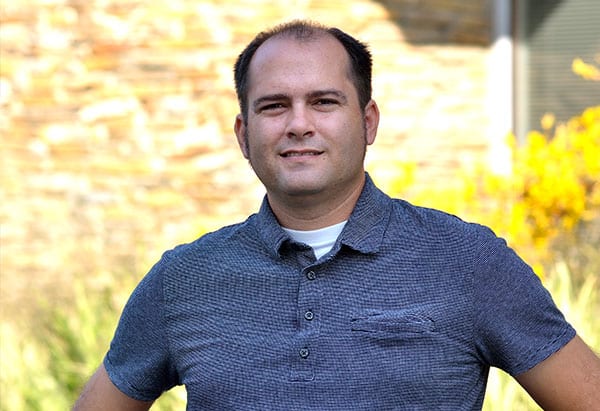Preparing for Winter: Best Practices in Fountain Winterization
Posted in Insights -

4 Questions with Chris Roy, Director of Creative Design, OTL, Inc.
1. When approaching winter, what do property owners need to know to care for their fountains?
In locales with four distinct seasons, a fountain that is not designed to operate year-round must be winterized annually to ensure that the equipment and materials remain in good condition.
The winterization process typically consists of:
- Draining the feature and all pipes of water
- Using compressed air and/or a wet/dry vacuum to remove all moisture from plumbing to ensure pipes do not burst
- Opening drain valves and plugs on pumps and strainers to allow accumulated water to drain
- Installing plugs in drain sumps to ensure that rainfall and snowmelt do not enter the plumbing during winter months
“
One essential element for owners to remember is that a winterized fountain cannot be ignored during the winter months. The fountain, equipment, and systems must be visually inspected at least weekly and also following any notable weather event (i.e. heavy snowfall, or a few unseasonably warm days.)
” Chris Roy, Director of Creative Design for OTL.
There is a practical reason for this caution; even though a fountain has been shut down and winterized, weather events can drive moisture and water into the system which can cause damage if not identified and rectified right away. If, for example, a city receives snowfall followed by a warm front, the snow will melt and water may enter the fountain; if that warm front is followed by freezing temperatures, the water could freeze, and pipes could burst.
This is a worst-case scenario; however, it clearly illustrates the risk of ignoring a winterized fountain.
2. What are some best practices in the winterization process?
Winter provides a perfect opportunity to implement upgrades during a water feature’s downtime. Owners may use this time to repair or update finishes and lighting and to polish bronze, brass, or stainless steel finishes.
Another best practice is to add warming devices to equipment vaults to prevent the space and equipment from experiencing freezing temperatures. Many owners utilize a small ‘milkhouse’ heater with integral heater, though an incandescent lamp left on in the vault can often do the job as well.
Because water features are significant investments, taking this extra step can add to the longevity of a fountain and protect owners from cold-weather-related damage.
3. When should commercial property owners begin the winterization process?
Winterizing should occur before the first hard freeze of the season. In Northern states, this often means fountains are winterized in late October/early November, while properties in more southern or western climates can often wait until early December.
4. Is winterization a requirement?
In places with freezing weather, winterization is a necessity – though this doesn’t necessarily mean fountains have to be shut down and drained.
We are increasingly building and operating fountains year-round with the aid of heaters or heat exchangers. Plumbing can also be kept warm with heat-trace.
Heat exchangers can be a particularly attractive option as the heating system for the water feature can often be tied in with the building’s heating systems or utilize waste heat, making operation very cost-effective.
When working with heated fountains, it’s important for owners to ensure that a qualified plumber inspects the fountain heating equipment before its first use each year. Just like other heating systems, regular maintenance and operating with care will result in more safe and efficient equipment for years to come.
 Chris Roy is the Director of Creative Design for Outside the Lines, Inc. In this role, he leads the company’s design efforts, working with developers, architects, and landscape architects, as well as engineers and vendors. Contact him at ChrisR@otl-inc.com.
Chris Roy is the Director of Creative Design for Outside the Lines, Inc. In this role, he leads the company’s design efforts, working with developers, architects, and landscape architects, as well as engineers and vendors. Contact him at ChrisR@otl-inc.com.
Featured Articles
- Getting to Know OTL’s Administrative/Accounting Assistant Nathan Touche
- Centers With Well-Designed Experiential Water Features Can Attract 30,000 Visitors Per Week
- Fountains of Light: California Water Features Developer Opens North Texas Office
- AI and Facility Management: How to Avoid Potential Pitfalls
- Safety First and Last: Creating a Safe Site in any Environment